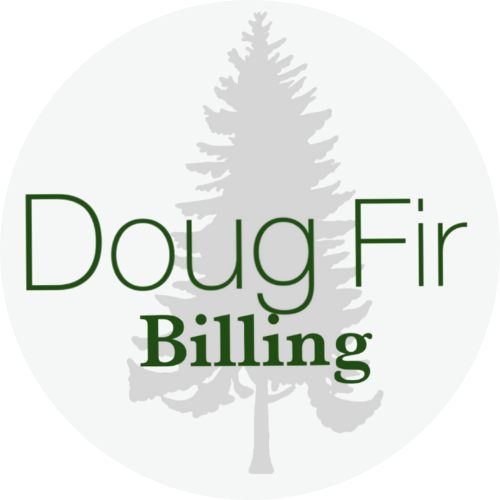A Guide to Understanding Medicaid
Do you feel like it’s nearly impossible to make heads or tails of Medicaid? If so, you are not alone. There are a lot of moving parts when it comes to this program and how it works, so it’s fair to feel confused by it. Whether you are a patient or a provider, understanding Medicaid is critical.
At Doug Fir Billing, we help you protect your revenue stream by ensuring that your medical billing happens accurately and on time. Our team has experts in Medicaid and Medicare so that you can spend more time with patients.
What Is Medicaid?
Although there can be a lot of confusion surrounding Medicaid, it is simply a form of medical insurance. Medicaid is health coverage for low-income individuals and families and has been in place since President Lyndon Johnson enacted the legislation to establish it in 1965.
It has expanded in the decades since to become one of the largest health insurance providers in the nation. The federal government pays matching funds to states for services provided to those enrolled in Medicaid.
Medicaid offers healthcare to millions of Americans.
It’s important to note that, despite their similar names, Medicaid and Medicare are not the same things. They are distinct programs that operate independently of each other. Many people are eligible to enroll in both options for their medical insurance, giving them dual coverage.
Who Administers Medicaid?
Medicaid is a federal program that the states are responsible for administering. This partnership significantly contributes to the confusion surrounding Medicaid.
Each state determines the following for Medicaid within their borders:
Individual Eligibility
Covered Services
Health Care Delivery
Payment Methods to Doctors and Hospitals
Because of this state-by-state administration, understanding Medicaid is tricky, indeed. For instance, someone living in Oregon will have a much different version of Medicaid than a resident of Florida. This variability can make it complicated for people if they move to a new state. It’s possible that they could suddenly find themselves ineligible for Medicaid, depending on the state.
Medicaid even has different names around the country. In Oregon, it is the Oregon Health Plan or OHP, while in Florida, it is called Sunshine Health. No wonder it can get so confusing!
Understanding Medicaid can be overwhelming and confusing if you try to do it on your own.
Every state has income levels as part of its qualifying requirements, but that is about where the similarities end. This is especially true due to the Affordable Care Act.
Medicaid and the Affordable Care Act (ACA)
The 2010 Affordable Care Act, also called Obamacare, offered the option of expanded Medicaid coverage. But not every state adopted the changes, further adding to the confusion of how this program works.
Most states chose to expand their Medicaid coverage, allowing individuals to qualify based on income alone. This change makes it possible for people without dependents to be eligible if they meet the income qualifications. However, as of October 2021, 12 states have still chosen not to align with the ACA expansion, so their Medicaid options are different.
For example, in Oregon, adults aged 19-64 are eligible for Medicaid (OHP) if they earn up to 138% of the federal poverty level (FPL). This eligibility is available in the absence of a disability and even if the person has no dependents. Children and teens up to age 18 can qualify if their families earn up to 305% of the FPL.
Each state administers Medicaid differently, making it very confusing.
But in Texas and other non-expansion states, you must meet a set income level and have a disability or be responsible for a dependent.
These differences make it confusing for providers and patients to know who is eligible. Practitioners must be clear on the rules in their state or rely on an outsourced biller to submit medical bills accurately.
What Does Medicaid Cover?
Although eligibility can vary in each state, there is some continuity in coverage for those who qualify. The federal government mandates that each state’s program cover specific services.
The list of requirements includes:
Physician’s Care
Home Health Care
Inpatient and Outpatient Hospital Services
Some Preventive Screenings
Laboratory Tests
X-Rays
Transportation to Medical Care
Mental Health Care (varies by state and age of recipient)
Although these services are mandatory, there is a long list of services that are optional as well. Again, each state gets to choose what its program will or will not cover from this list.
Dental care is on the optional list of benefits. Navigating the services offered is a difficult piece of understanding Medicaid.
Optional services include:
Physical Therapy
Occupational Therapy
Speech and Language Therapy
Dental Care
Eyeglasses
Prosthetics
Hospice
Medicaid and CHIP
Because of the income level requirements, many children do not qualify for Medicaid. But a large number of those children also do not have any other medical coverage. The Children’s Health Insurance Program (CHIP) helps to bridge this gap.
In much the same way as Medicaid, CHIP is a federal program that the states administer. It offers similar coverage to Medicaid but does not have to provide the exact same services. Currently, the two programs cover about 75 million Americans. On the provider’s side, these two programs can look nearly identical.
There is also a difference in the funding for each program. For the most part, the federal government matches the states’ Medicaid expenditures dollar for dollar. For CHIP, however, each state receives a set amount per year as one grant. The state then decides how to use those funds within federal rules.
This state-by-state “report card” can help you see how your state is doing with Medicaid and CHIP services.
CHIP is another program that offers healthcare coverage.
Understanding Medicaid Is Complicated
Clearly, Medicaid is not simple to navigate. The partnership between federal and state governments is often fuzzy at best, and it creates significant confusion for patients and providers alike.
Working with an insurance broker who has training in Medicaid is the most effective way for patients to determine eligibility and establish coverage. And for providers, using an expert medical biller is the best bet. An experienced biller can help you get the payments you deserve for the care you deliver.
If you’d like help with your practice’s billing, reach out to the team at Doug Fir. Our friendly experts can take this task off your plate so that you can spend more time with patients. Connect with us today to get started.






